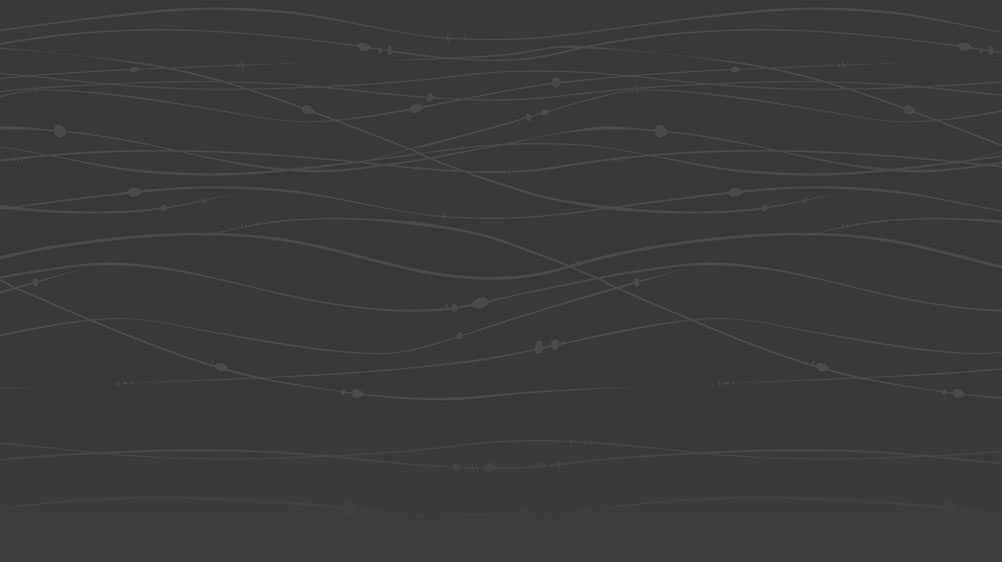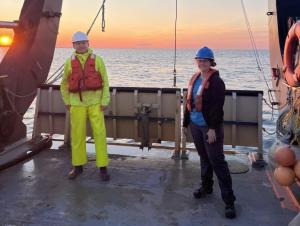

Written by Susan Daniel, Lyubov Burlakova, Alexander Karatayev, and Nikolai Barulin
In July, a team of scientists from the GLC boarded the R/V Lake Guardian in Cleveland, Ohio, to conduct the Cooperative Science and Monitoring Initiative (CSMI) benthic survey on Lake Erie, following previous surveys in 2014 and 2019. During the survey, there was a happy reunion with former GLC student employee and GLES alumnus, Josh Allan, a relief Marine Technician for the Lake Guardian. Josh had helped process benthic samples at the Great Lakes Center from September 2018 until his graduation in 2020. We were reminded of his stellar work ethic and positive demeanor as he assisted us with sample collection.
During the week-long survey, Alexander Karatayev, Lyubov Burlakova, Nikolai Barulin, and Susan Daniel aimed to collect over 200 samples from 77 locations. The focus this year was to monitor the benthic fauna, particularly the quagga mussels (Dreissena rostriformis bugensis) and zebra mussels (Dreissena polymorpha) that have altered the lake environment over the past 30 years. In addition to traditional sampling methods, video recordings of the sediment surface were used to gather near real-time information on quagga and zebra mussel distribution, revealing a possible decrease in their abundance. However, this finding will be verified with traditional methods, as video recordings may underrepresent areas with low visibility and small mussels.
Other research questions were also explored during this CSMI survey. Professor Yvonne Vadeboncoeur and graduate student Ahmed Ogidan from Wright State University collected algae to quantify differences in algal communities inhabiting soft sediments and growing attached to dreissenid mussel shells across depth gradients in Lake Erie. A separate team from the National Oceanic and Atmospheric Administration, including Paul Glyshaw and Rachel Orzechowski, examined morphological and reproductive changes in quagga mussels across different depths and food gradients.
Lastly, sediment core samples were collected by two Canadian research teams. One team from the University of Toronto, including Maria Dittrich, Khoren Avetisyan, Ms. Kajal, and Zach Diloreto, measured oxygen, pH, redox, nutrients and organic carbon in porewater and different sediment layers. These samples, although difficult to collect from hard substrates like rocks, gravel, and sand, will help us understand how quagga mussels altered the sediments and sediment-water interface. The results will be modeled with AQUSIM to calculate carbon mineralization rates and nutrient retention. Researchers from the University of Waterloo, Serghei Bocaniov, Stephanie Slowinski, Kayla Martin, and Tia Jenkins, focused on biogeochemical dynamics and carbon mineralization at the sediment-water interface. Their work will explore historical relationships between sediment phosphorus concentrations and various stressors, such as climate change, land use, watershed-based phosphorus inputs, lake productivity, dreissenids, and shoreline erosion.
As the CSMI continues to unravel the complex interactions within Lake Erie’s ecosystem, our collaborative efforts will shed light on the dynamic changes occurring beneath the surface. The findings from this survey will enhance our understanding of how invasive species and environmental stressors impact the lake and also provide critical insights that will inform future conservation and management strategies.
Image caption: Nikolai Barulin and Annie Scofield (EPA) after deploying the Benthic Imaging System.
Some content on this page is saved in PDF format. To view these files, download Adobe Acrobat Reader free. If you are having trouble reading a document, request an accessible copy of the PDF or Word Document.
